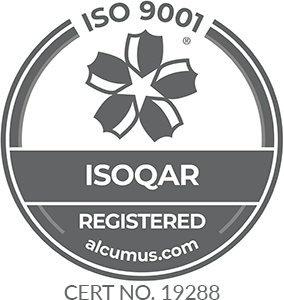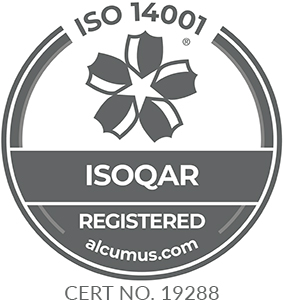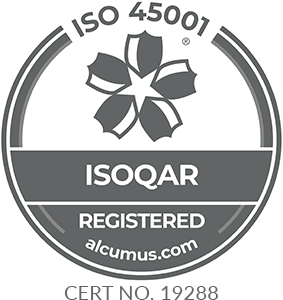Lifts, once considered a marvel of engineering, have come a long way since their inception. Today, they are an integral part of our daily lives, transporting us effortlessly through buildings of all sizes. Thanks to advancements in technology, lifts have evolved far beyond their basic functionality. In this blog post, we’ll take a closer look at some of the biggest technological innovations in the world of lifts.
Destination Control Systems
Destination Control Systems (DCS), also known as Destination Dispatch Systems, represent a cutting-edge advancement in lift technology, especially beneficial in high-rise and busy buildings. These systems replace conventional lift call and control methods with a dynamic and intelligent approach, optimizing passenger transportation.
In a DCS, passengers entering a building use a lobby interface to specify their desired destination floor. The system then intelligently groups passengers with similar or nearby destinations, drastically reducing wait times and optimizing lift usage. The core of DCS lies in advanced algorithms, which optimize lift assignments by considering factors such as requested floors, lift locations, and passenger distribution. This results in reduced wait times, shorter travel durations, and enhanced overall efficiency.
Access control devices, such as keycards or RFID cards, are often integrated into DCS implementations for passenger identification. This allows the system to assign passengers to the most suitable lift car based on their destination and, at times, their access privileges within the building.
One of the standout benefits of DCS is the significant reduction in intermediate stops achieved by grouping passengers with shared destinations. This translates into quicker journeys and less crowded lifts, providing a more pleasant experience for passengers.
User-friendly interfaces, including touchscreen displays and mobile apps, are common features of DCS systems, simplifying the input of destination preferences and elevating the overall passenger experience. DCS lifts are highly efficient, spending less time stopping at floors with no passengers heading in that direction. This not only conserves energy but also reduces wear and tear on lift components.
DCS systems are adaptable and can respond to changing traffic patterns, prioritizing efficient transportation during peak hours and energy conservation during off-peak times. They continuously monitor lift performance, passenger traffic, and equipment health, using this data for predictive maintenance to ensure lifts remain in optimal working condition.
Integration with other building systems, such as access control, security, and building automation, enhances coordination and security within the building. Lastly, DCS systems contribute to improved accessibility for individuals with disabilities through features like voice prompts, Braille signage, and user-friendly interfaces.
In summary, Destination Control Systems are cutting-edge technologies that redefine lift operations in buildings. They intelligently group passengers by destination, optimize lift assignments, and enhance the overall passenger experience. DCS is a valuable addition to modern building management systems, significantly improving efficiency and convenience in vertical transportation.
Machine-Room-Less (MRL) Lifts
An important advancement in lift design is the emergence of Machine-Room-Less (MRL) lifts. These lifts represent a significant departure from traditional lift systems by eliminating the need for a bulky machine room. This innovation has made MRL lifts an ideal choice for buildings facing space constraints and seeking modern, efficient vertical transportation solutions.
One of the primary advantages of MRL lifts is their compact design. By eliminating the machine room, these lifts utilize space more efficiently, freeing up valuable square footage within the building. This efficient use of space is particularly beneficial in structures where every inch counts, such as urban high-rises or renovations in older buildings.
MRL lifts are also celebrated for their energy efficiency. With innovative regenerative drive systems and energy-saving components, they reduce energy consumption, contributing to sustainability efforts. This eco-friendly approach aligns with the growing emphasis on environmentally responsible building practices.
Additionally, passengers enjoy smoother and quieter rides with MRL lifts compared to traditional models. The absence of a machine room and the use of advanced technology contribute to reduced vibrations and noise levels, resulting in a more comfortable and pleasant lift experience.
In summary, Machine-Room-Less (MRL) lifts are a significant leap forward in lift design. Their compactness, energy efficiency, and improved ride quality make them an excellent choice for buildings with limited space, emphasizing sustainability and passenger comfort in modern vertical transportation solutions.
IoT Connectivity
The integration of the Internet of Things (IoT) into the realm of lifts has ushered in a new era of enhanced performance, safety, and efficiency. Lift manufacturers have embraced this technology, incorporating sensors and connectivity features into their systems to enable real-time monitoring of lift health and functionality. The utilization of IoT in lifts brings forth a range of benefits:
- Remote Monitoring and Maintenance: Lift manufacturers and building management teams can now remotely monitor lift performance in real-time. Sensors and connected systems provide a wealth of data, including lift health, usage patterns, and potential issues. This trove of information empowers proactive maintenance efforts, reducing downtime and preventing unexpected breakdowns.
- Enhanced Safety: IoT technology takes lift safety to a new level by furnishing real-time updates on critical components such as doors and emergency brakes. In the event of an issue, the system can swiftly trigger automatic safety protocols, including halting the lift to prevent accidents. Advanced systems can even detect incidents like falls or fainting, immediately alerting site or remote teams for rapid response.
- Efficient Operation: Lifts equipped with IoT sensors boast the capability to optimize their operation based on usage patterns. For instance, they can dynamically adjust lift dispatching to minimize passenger wait times during peak hours or efficiently direct passengers to the most available lifts using destination dispatch systems.
- Data Analytics: The data collected by IoT-enabled lifts is a goldmine of information that can be meticulously analysed. This analysis identifies trends and patterns, providing valuable insights for decisions related to building design, maintenance schedules, and potential lift system upgrades.
- Integration with Building Systems: IoT-equipped lifts seamlessly integrate with other building systems, including access control, building automation, and security systems. This synergy enhances overall building management and fortifies security protocols, offering a holistic approach to building operations.
In essence, the incorporation of IoT technology into lifts has ushered in a new era of smart, efficient, and safe vertical transportation. It empowers stakeholders with real-time insights, enabling proactive maintenance and facilitating data-driven decisions that optimize performance and enhance passenger safety. Moreover, the integration of IoT into lifts underscores its role as a vital component of modern building management systems, contributing to a seamless and secure built environment.
Green Lifts
In an era focused on sustainability, green lifts are gaining popularity. These lifts are designed with energy-efficient components, regenerative drives, and LED lighting to reduce energy consumption. Some models even use solar power to further minimise their environmental footprint.
Morris Vermaport introduced their own green innovation to the UK market in 1998 with the introduction of the Ecocell® range of battery-powered lifts. These lifts have been meticulously engineered to not only reduce energy usage but also provide an integrated standby power supply, making them the perfect choice for evacuation and power loss scenarios.
The Ecocell® lift has undergone independent verification by the renowned Environmental Technology Centre at the University of Nottingham, confirming its exceptional energy efficiency. It surpasses typical gearless MRL passenger lifts and geared traction lifts in terms of energy efficiency, providing twice the number of journeys for every £1.00 spent on energy compared to similar gearless MRL lifts and three times the number compared to geared traction lifts.
These eco-friendly lifts incorporate energy-efficient technologies, reducing carbon footprint and achieving significant CO2 savings of 48,209 kg compared to hydraulic units and 17,368 kg compared to the average MRL lift over a 20-year period. Ecocell® lifts can be further enhanced by connecting them to renewable energy sources such as turbines or photovoltaic cells, neutralising their environmental impact. Moreover, the Ecocell® lift has been assessed to receive 2 credits under the BREEAM-Ene 06 category for “energy-efficient lifts.” Ecocell® exemplifies a strong commitment to sustainability, offering a greener future for the built environment.
Enhanced Safety Features
Lifts have undergone a significant transformation in recent years, with a steadfast focus on enhancing safety features to prioritize passenger well-being. These innovations have redefined the standards of safety in lift design, ensuring that riding lifts is as secure as it is convenient.
- Advanced Door Systems: The forefront of lift safety innovation lies in sophisticated door systems equipped with sensors and cameras. These intelligent systems actively detect obstructions in the doorway, preventing doors from closing on passengers or objects that may be in the way. This technology provides an extra layer of protection, significantly reducing the risk of accidents during boarding and disembarking.
- Emergency Communication Systems: Modern lifts are equipped with robust emergency communication systems, allowing passengers to seek immediate assistance in case of unexpected events. These systems facilitate direct communication with building management or emergency services, ensuring prompt response and assistance when needed. This capability provides passengers with peace of mind and reinforces their safety.
- Backup Power Supplies: Unforeseen power outages can potentially strand passengers within lifts, leading to uncomfortable situations. To mitigate this risk, Morris Vermaport have introduced lifts which are equipped with backup power supplies. These backup systems kick in during power interruptions, ensuring that lifts can safely return passengers to their intended floors or to the nearest accessible level. This feature not only guarantees passenger safety but also minimizes inconvenience during power-related incidents.
In conclusion, recent innovations in lift safety have ushered in a new era of passenger protection and peace of mind. Advanced door systems, emergency communication capabilities, and backup power supplies are pivotal in ensuring that lifts remain a secure mode of vertical transportation, even in challenging situations. These safety enhancements exemplify the unwavering commitment of lift designers and manufacturers to prioritize passenger well-being in their designs.
Smart Lifts
The integration of smart technology into lifts has ushered in a new era of user-friendliness and efficiency, enhancing the overall lift experience for passengers. These smart features, ranging from touchless controls to voice-activated commands and smartphone apps, have revolutionized the way we interact with lifts, making them more convenient and efficient than ever before.
- Touchless Controls: In the age of hygiene consciousness, touchless controls have become increasingly popular in lifts. Passengers can simply wave their hand or hover a finger near the control panel to activate the desired floor selection. This hands-free approach not only minimizes physical contact with surfaces but also adds a futuristic touch to lift operations.
- Voice-Activated Commands: Voice recognition technology has found its way into lifts, allowing passengers to simply speak their desired floor or command. This convenient feature eliminates the need to press buttons or touch surfaces, providing a seamless and hygienic experience.
- Smartphone Apps: Lift manufacturers have developed smartphone apps that enable passengers to call lifts remotely. By using their mobile devices, passengers can request an lift before even reaching the lobby, reducing wait times and increasing efficiency. These apps often provide real-time information on lift availability, further enhancing the passenger experience.
- Enhanced Convenience: These smart features collectively contribute to enhanced convenience and efficiency. Passengers experience shorter wait times, reduced physical interaction, and a more streamlined ride, all of which improve the overall lift experience.
In conclusion, smart technology has brought a wave of innovation to lifts, making them more user-friendly, efficient, and in tune with modern needs. Touchless controls, voice-activated commands, and smartphone apps represent the future of lift interactions, prioritizing passenger convenience and safety in an increasingly digital world. These innovations demonstrate the commitment of lift designers and manufacturers to stay at the forefront of technology, providing passengers with cutting-edge vertical transportation solutions.








